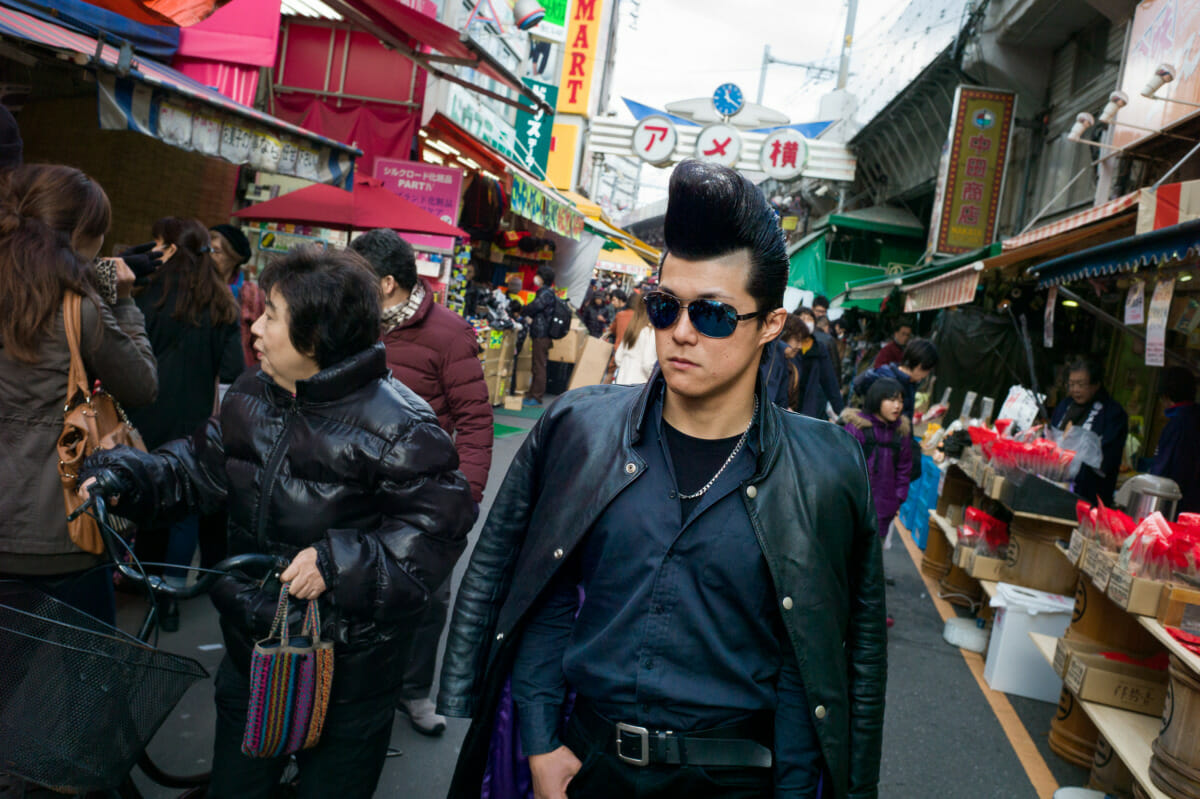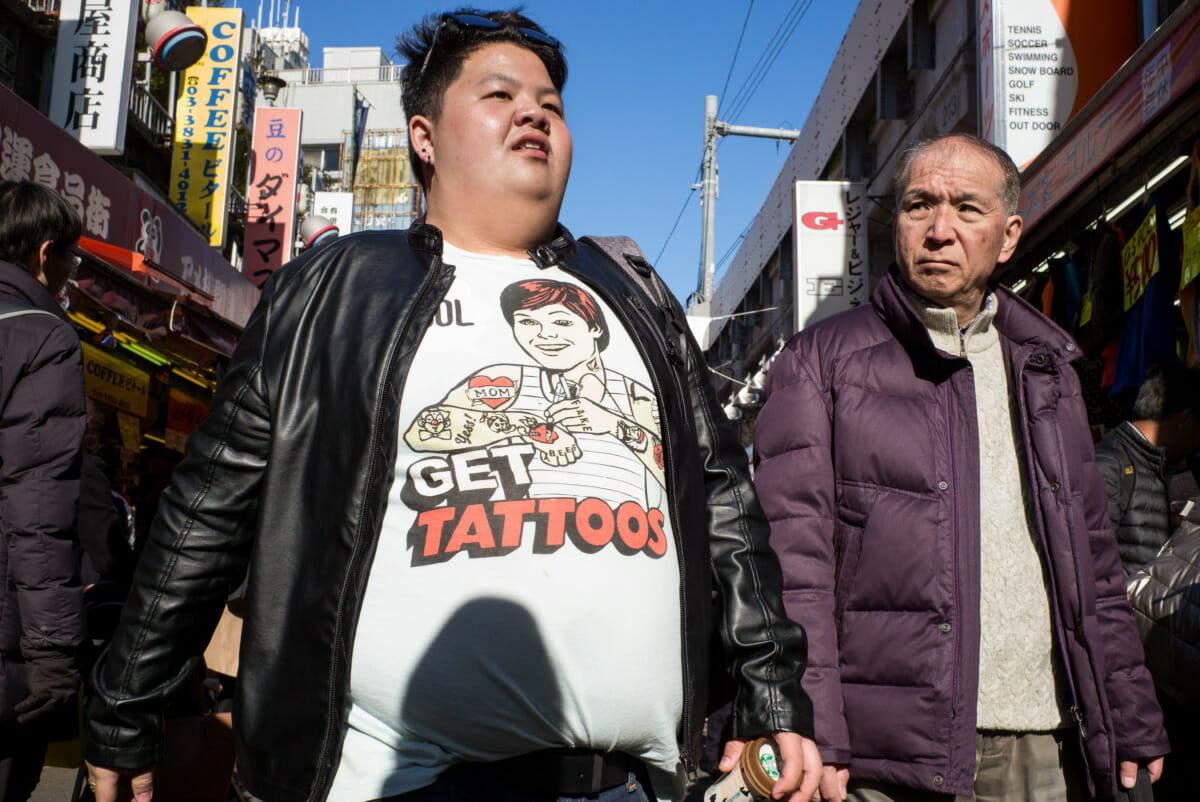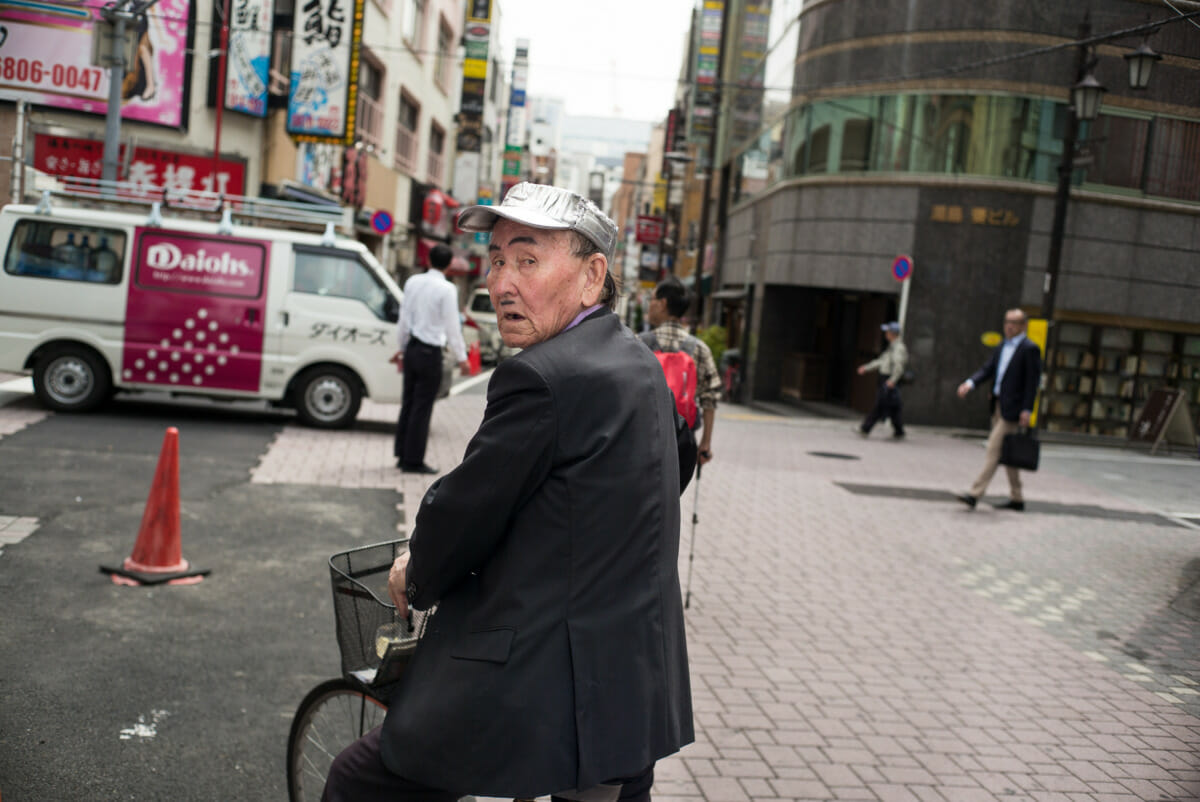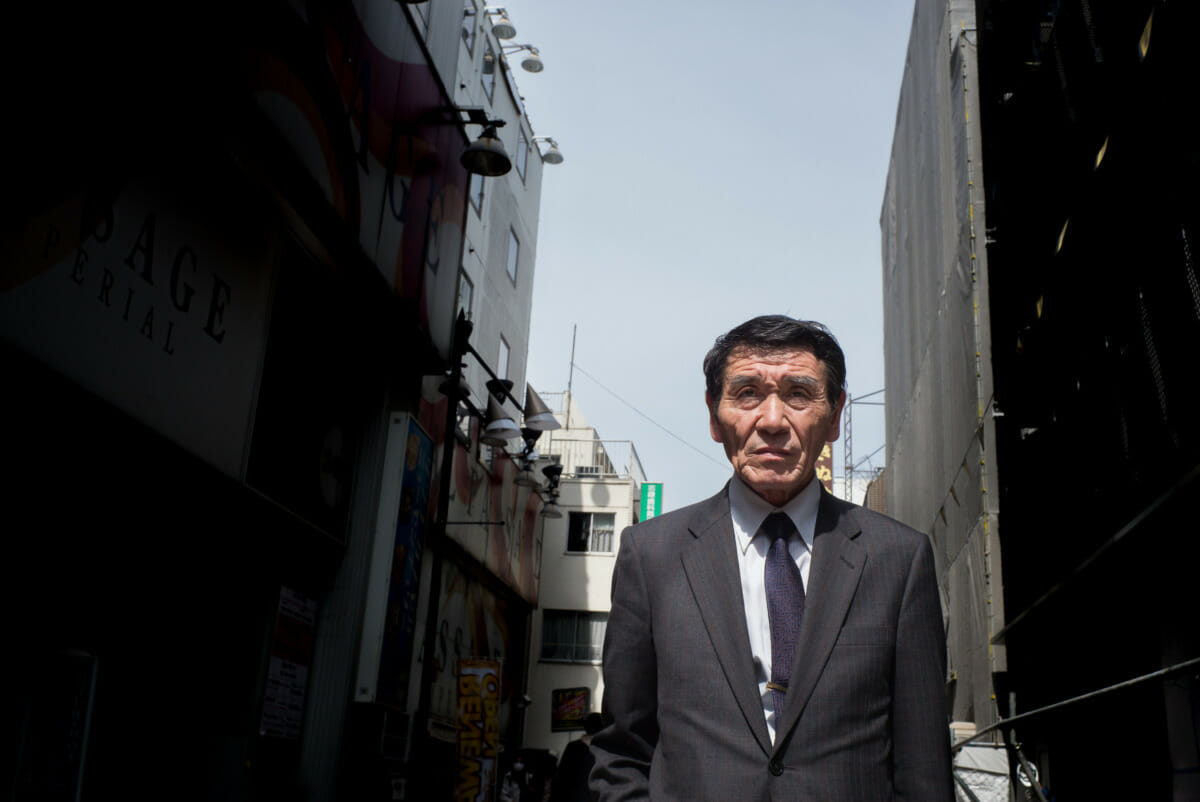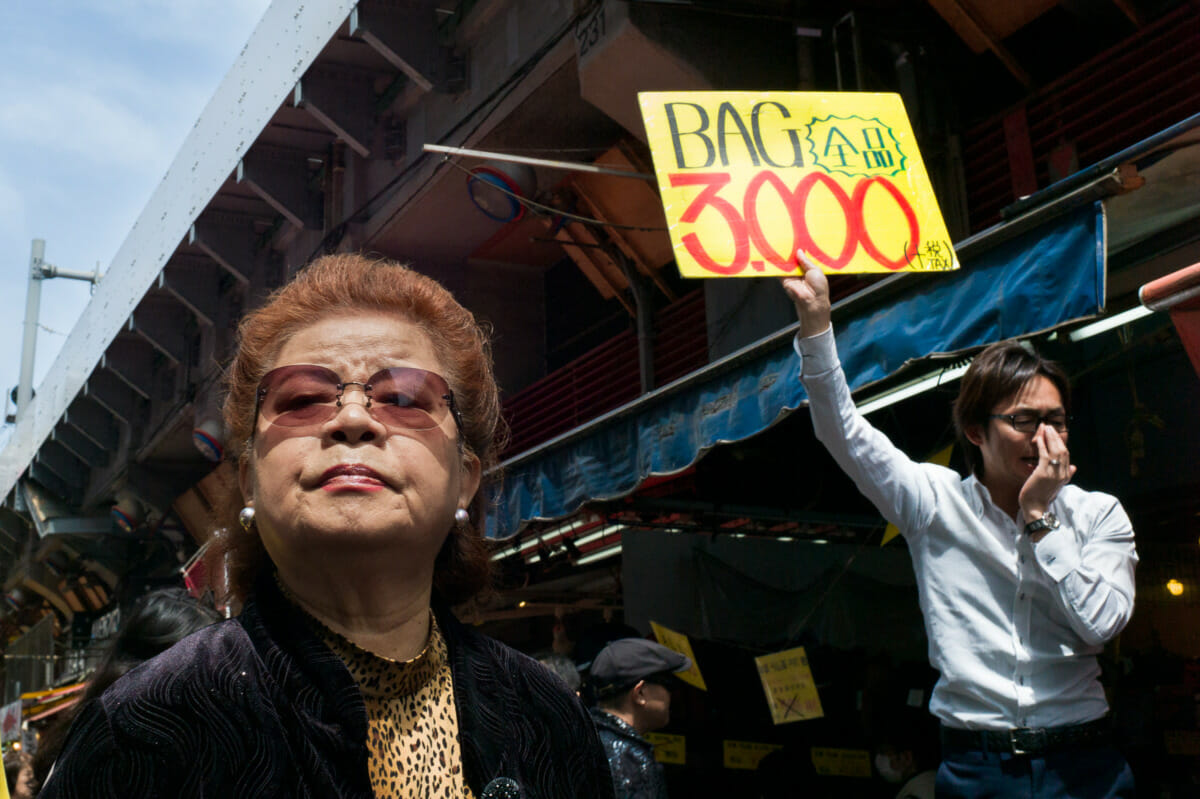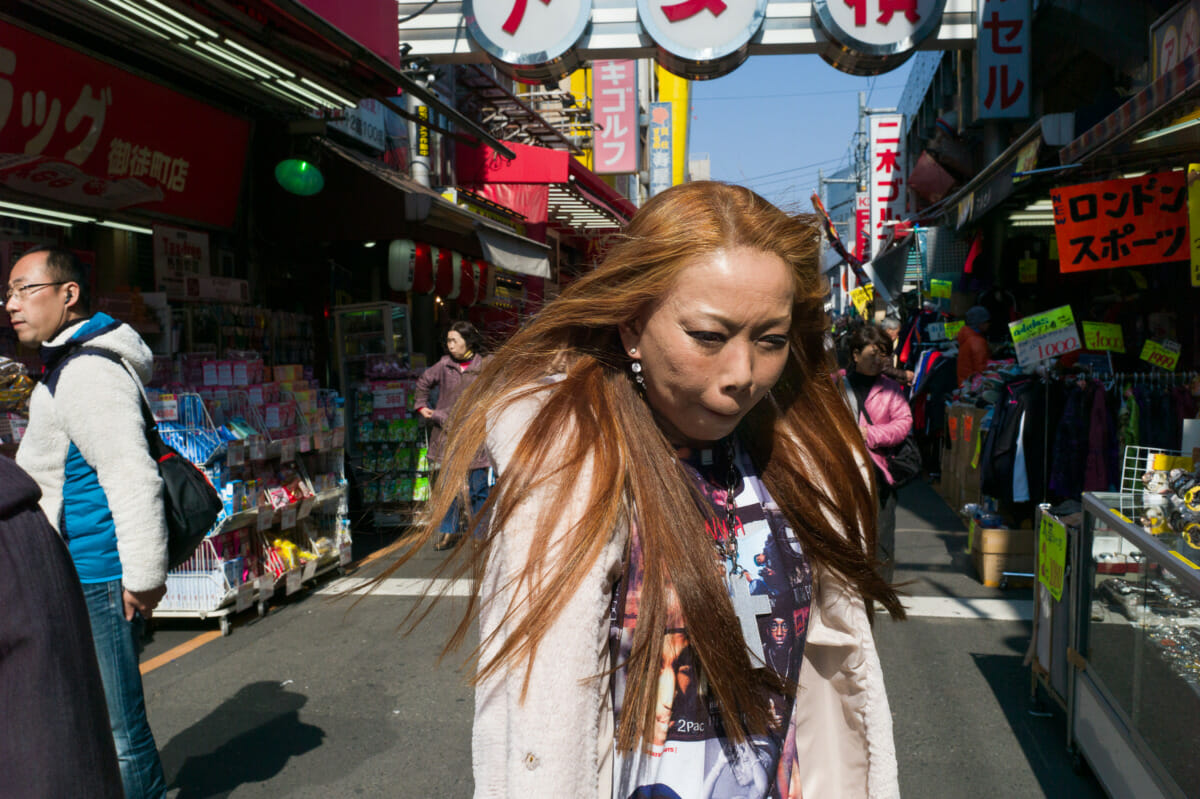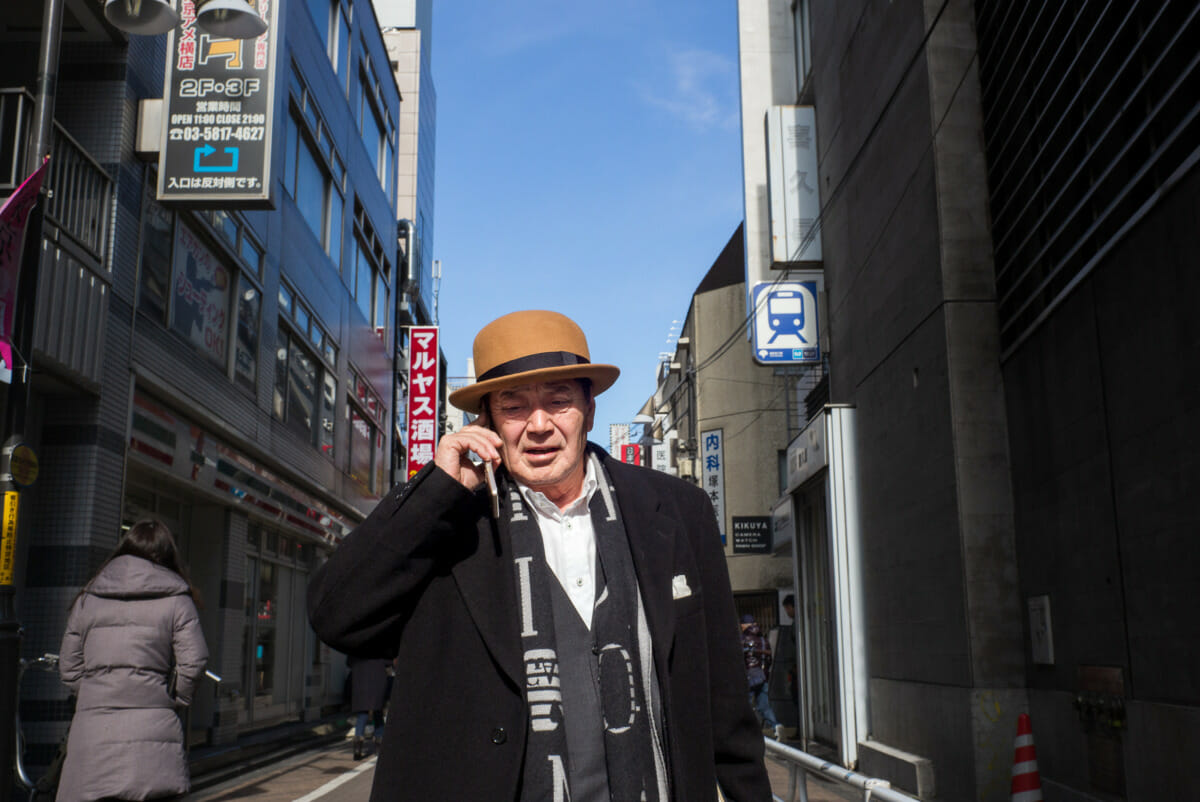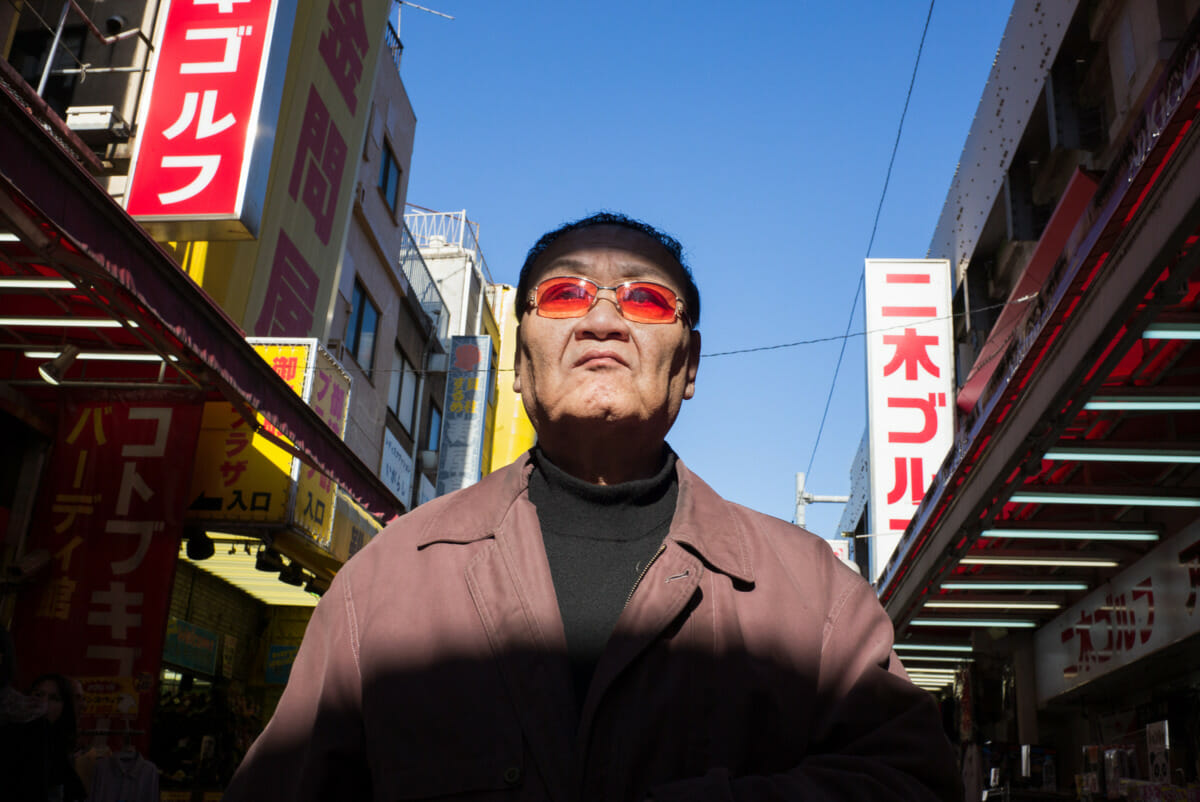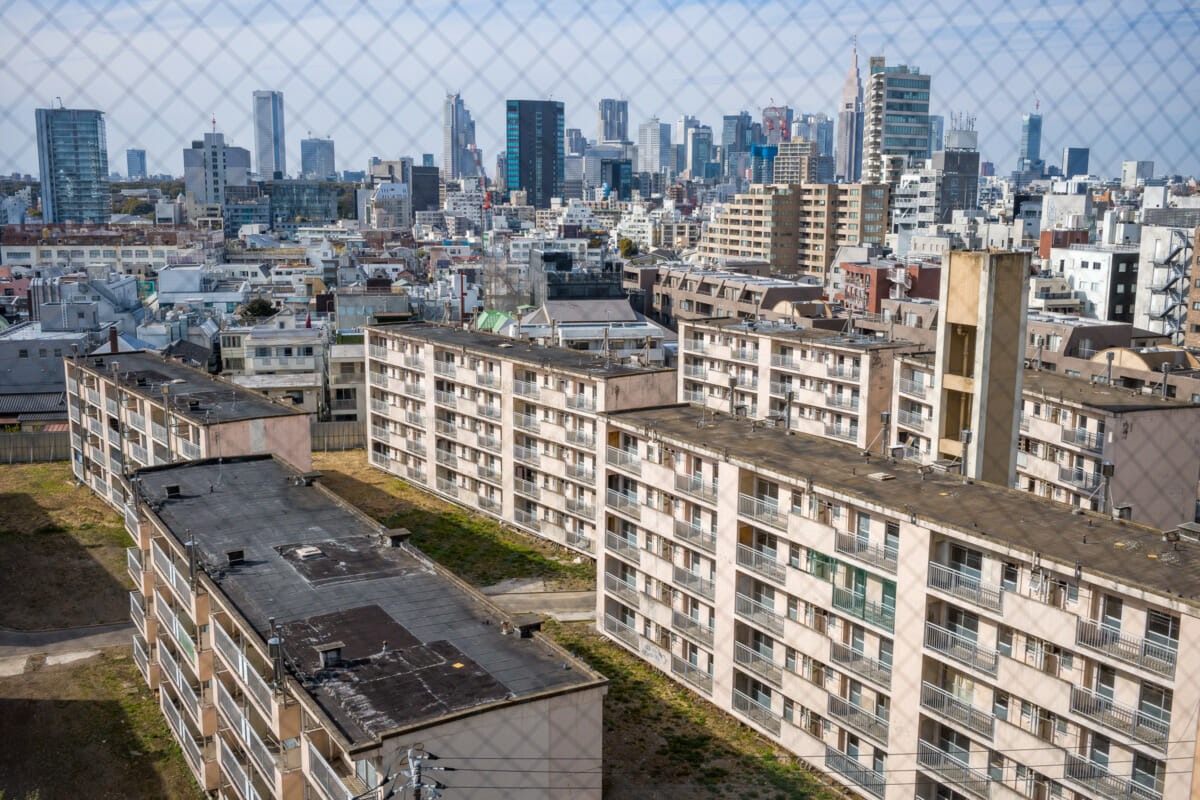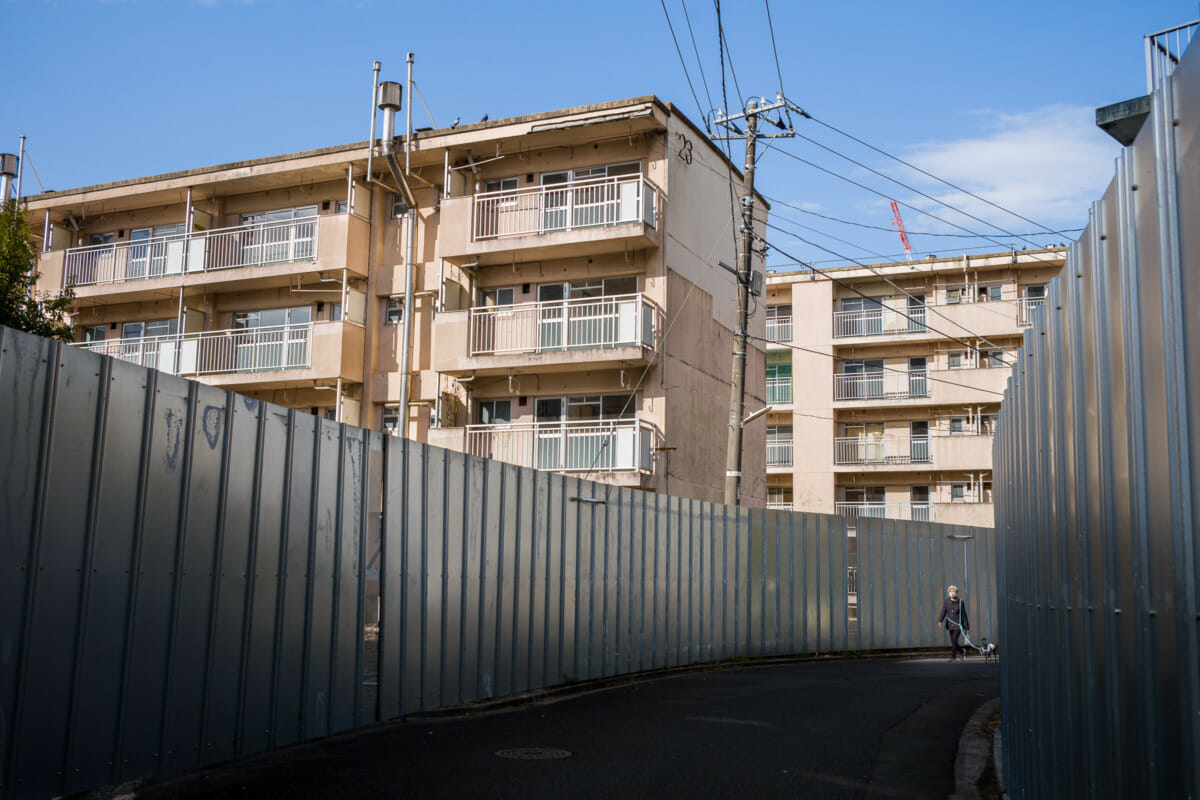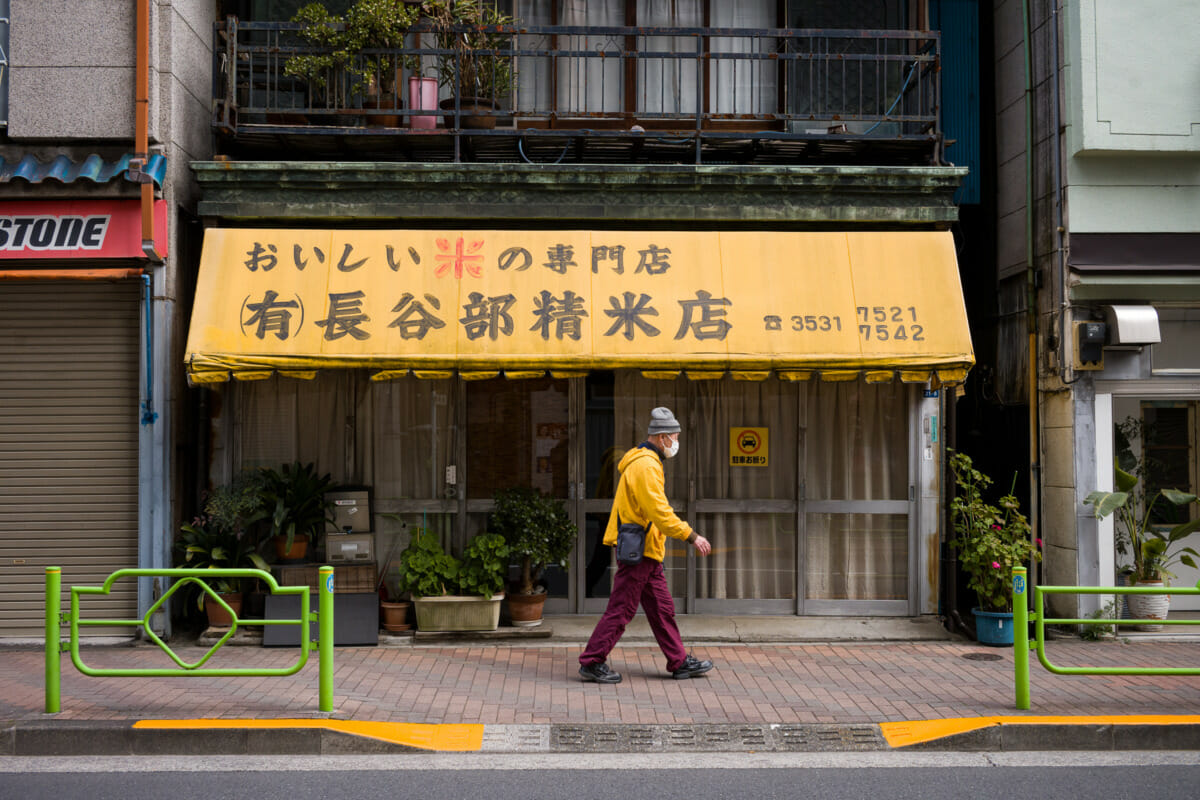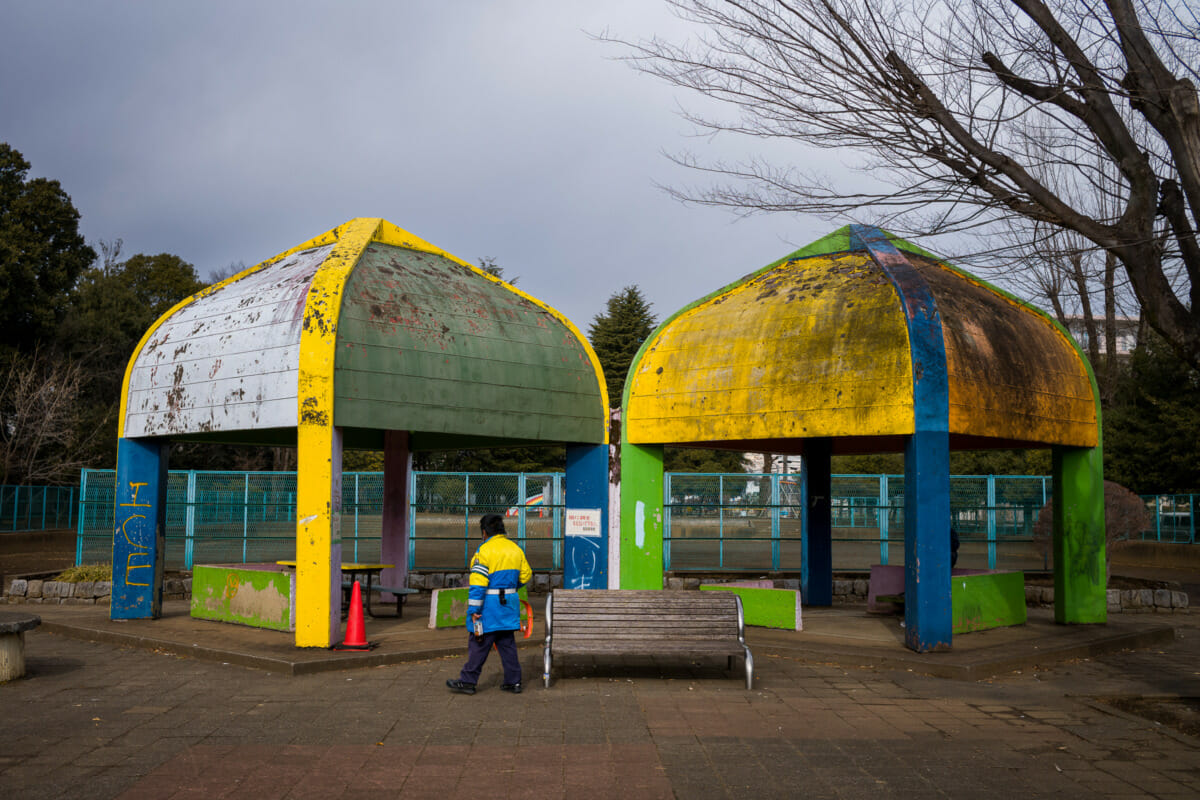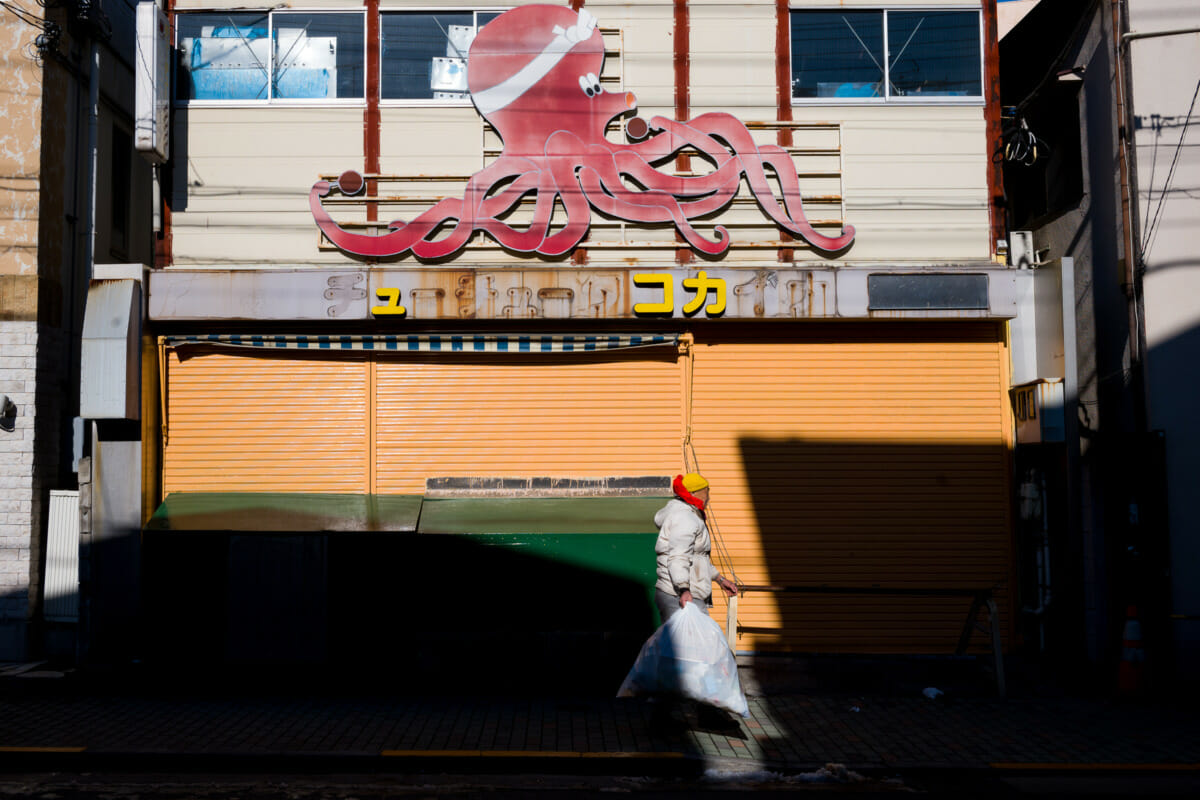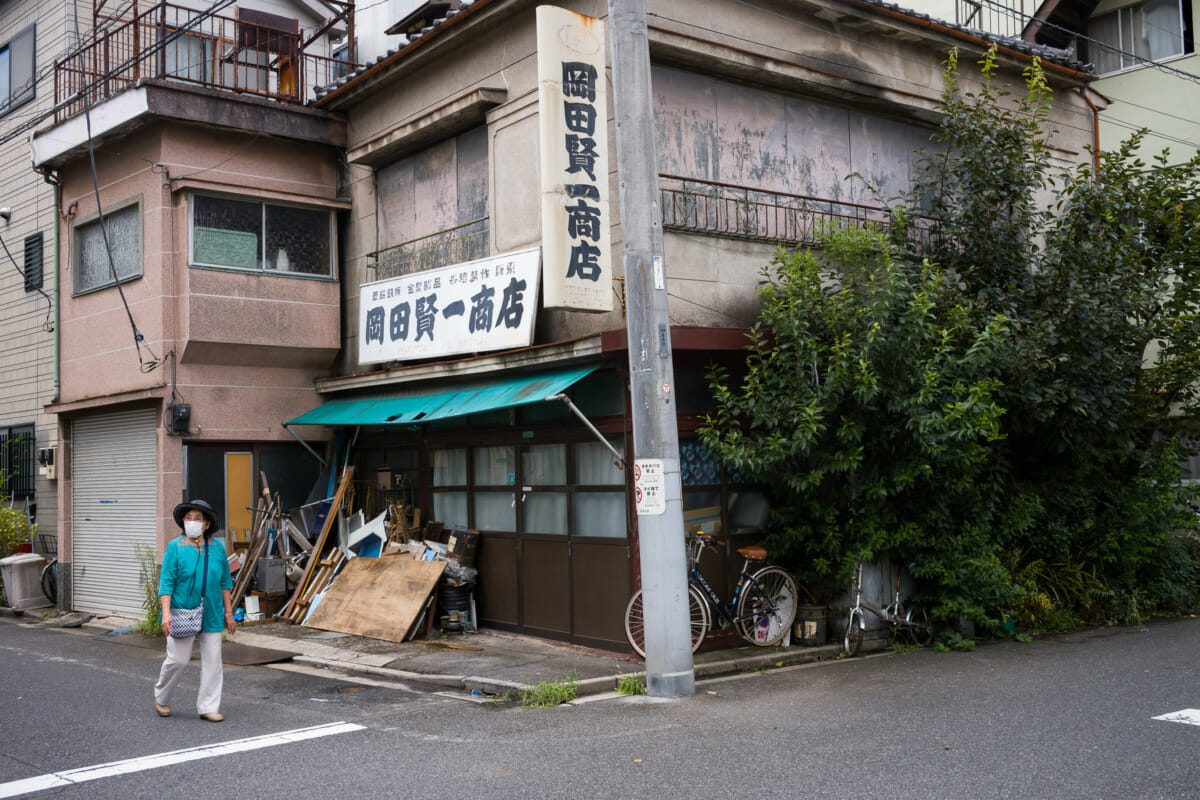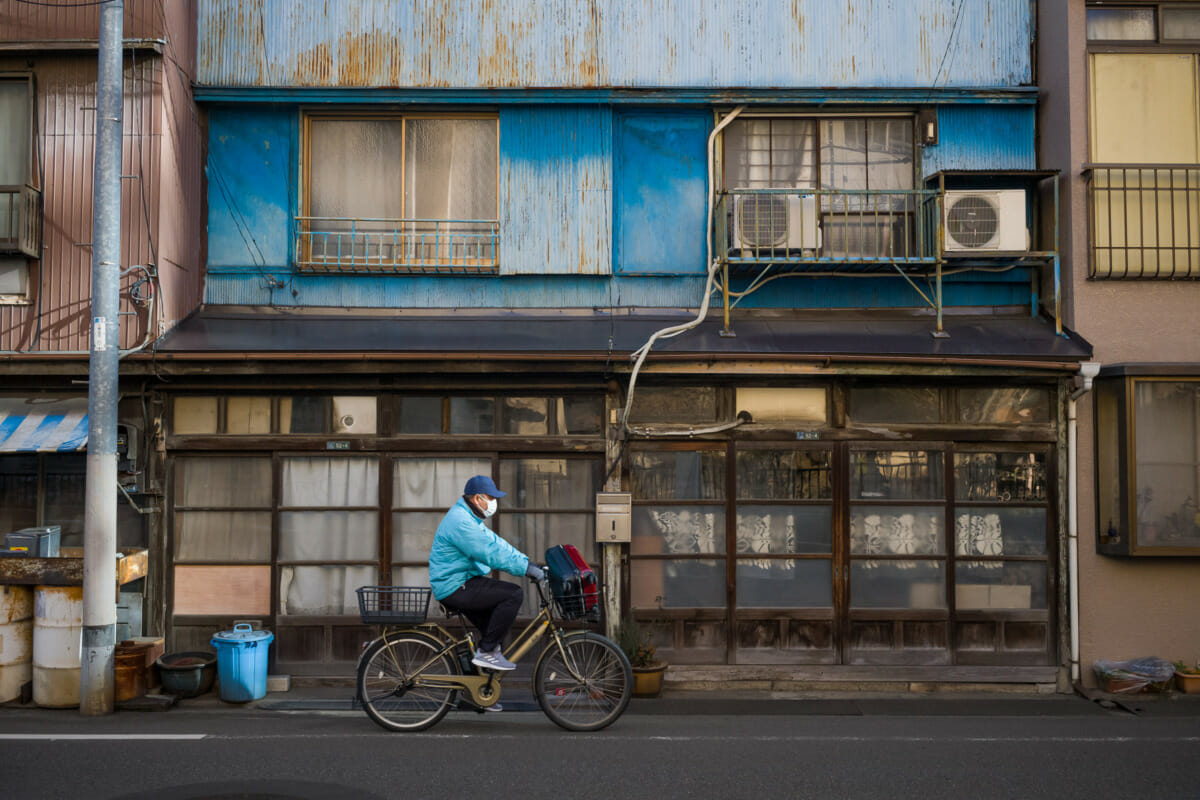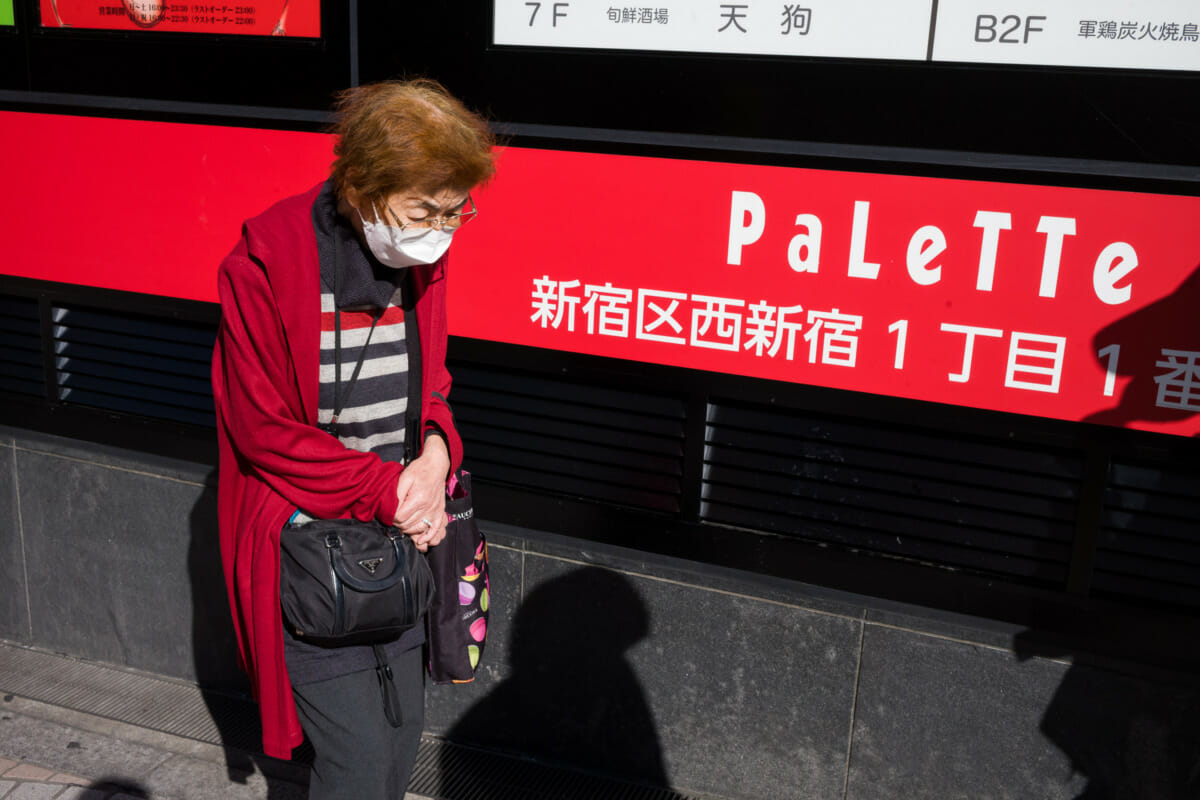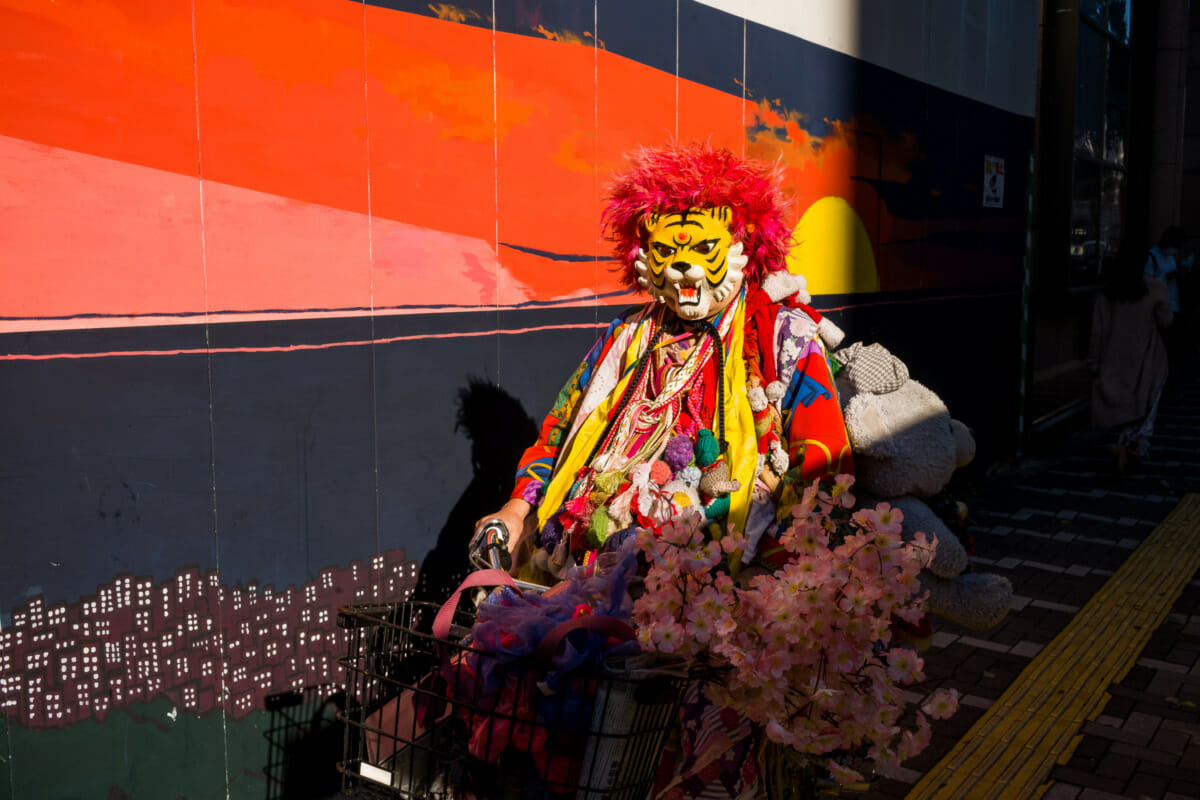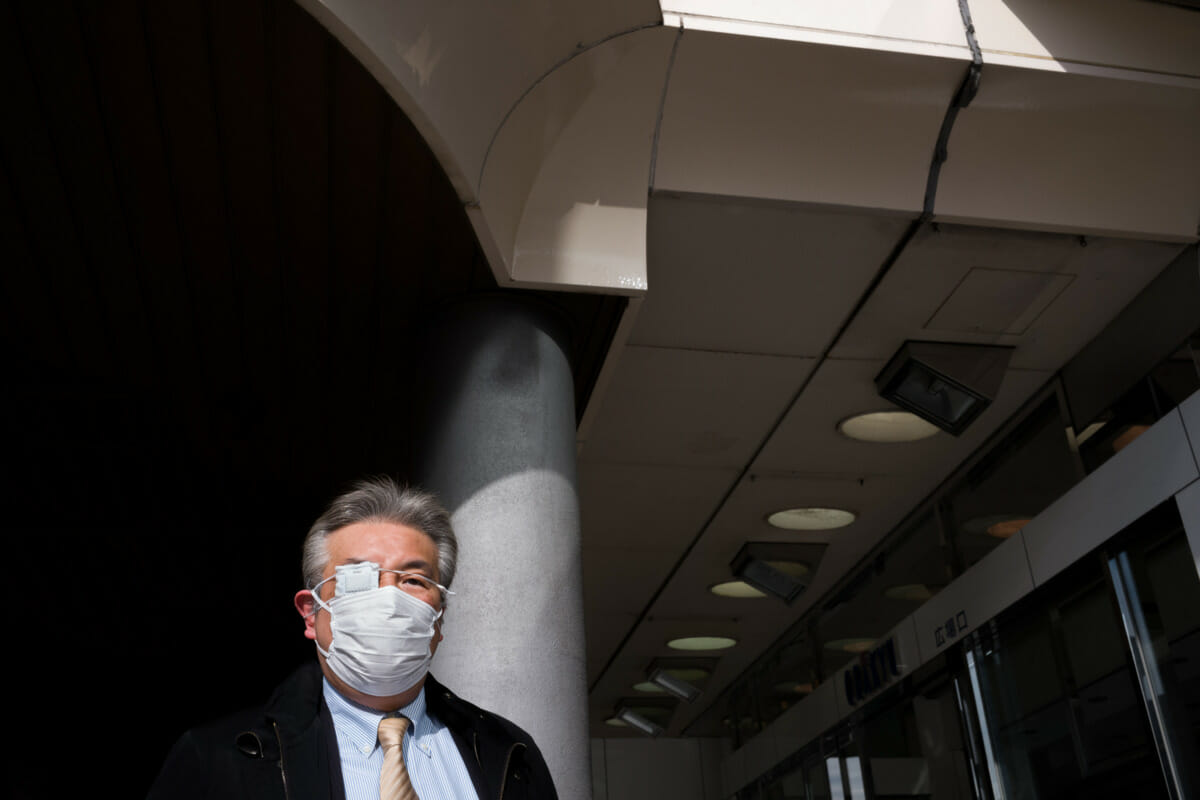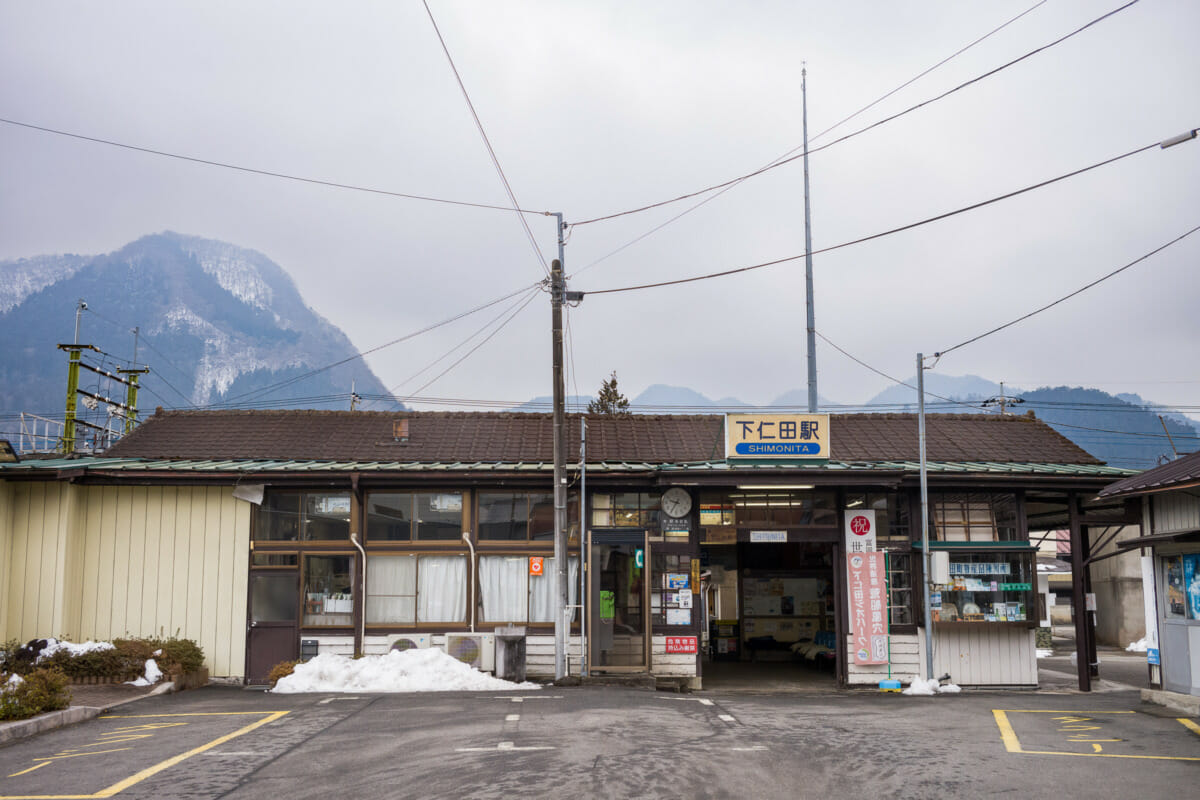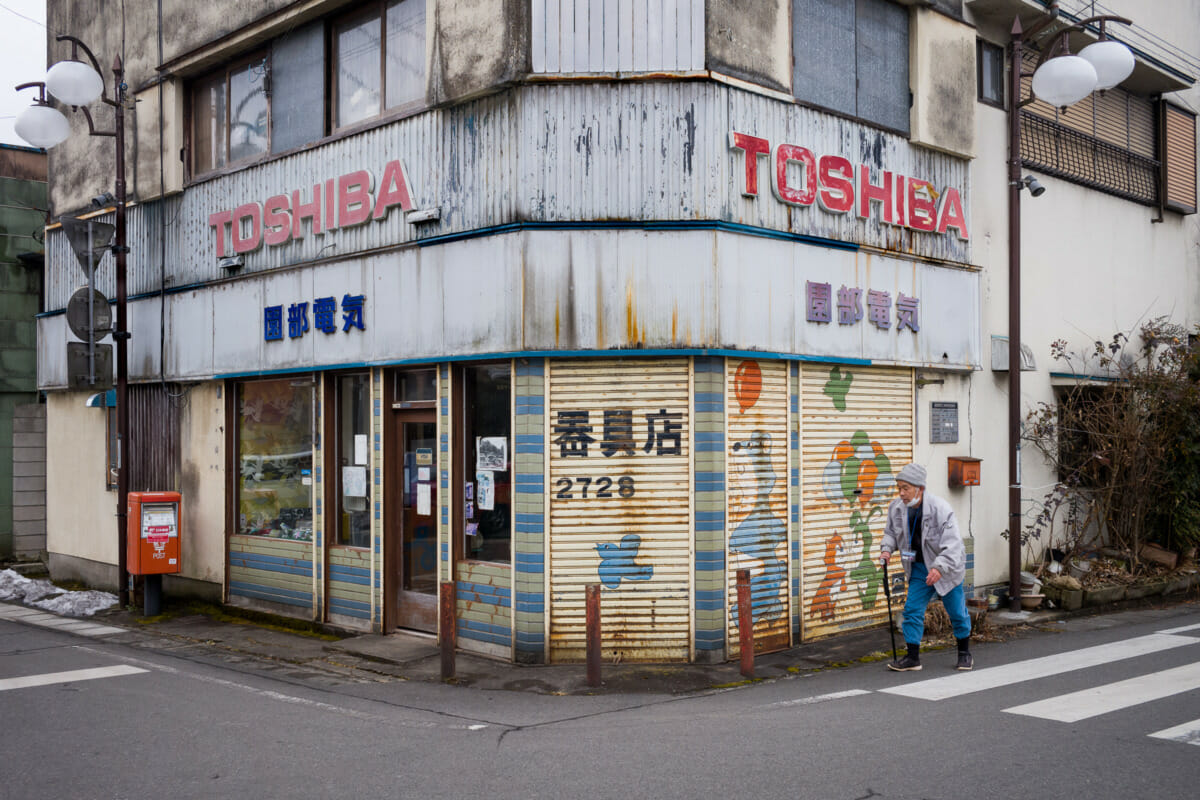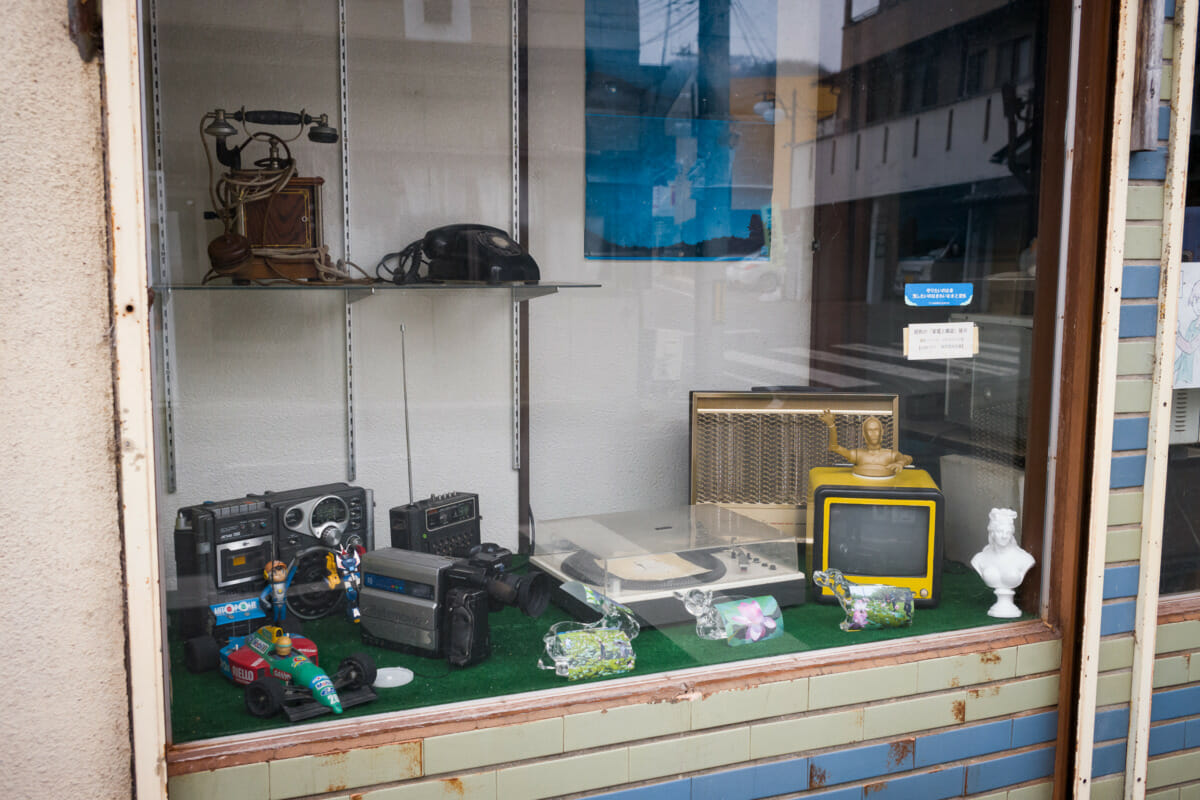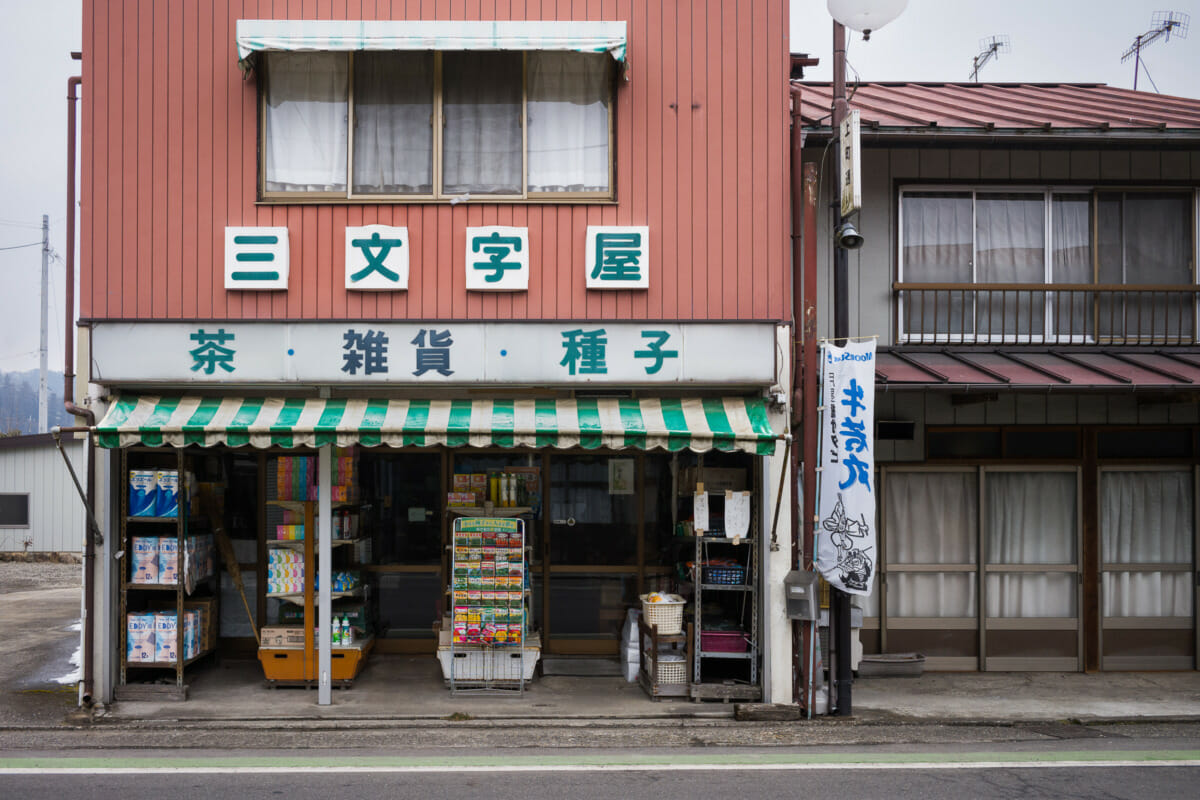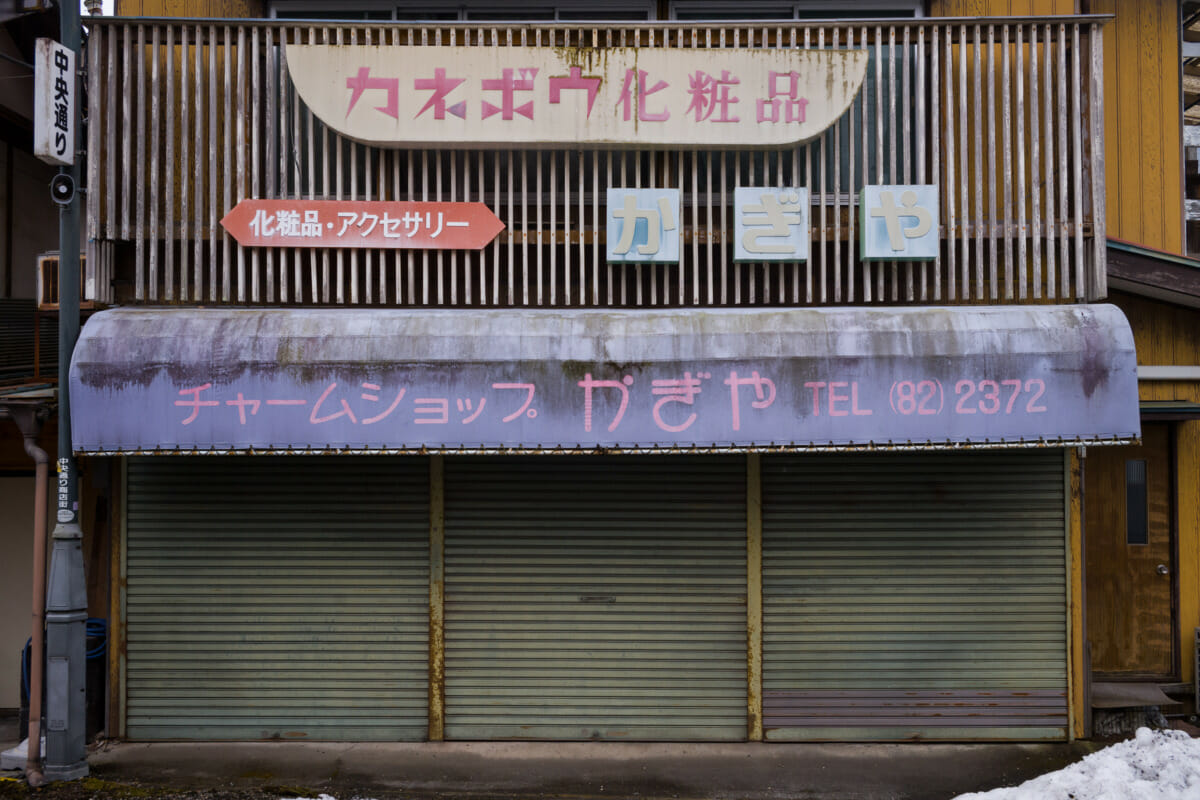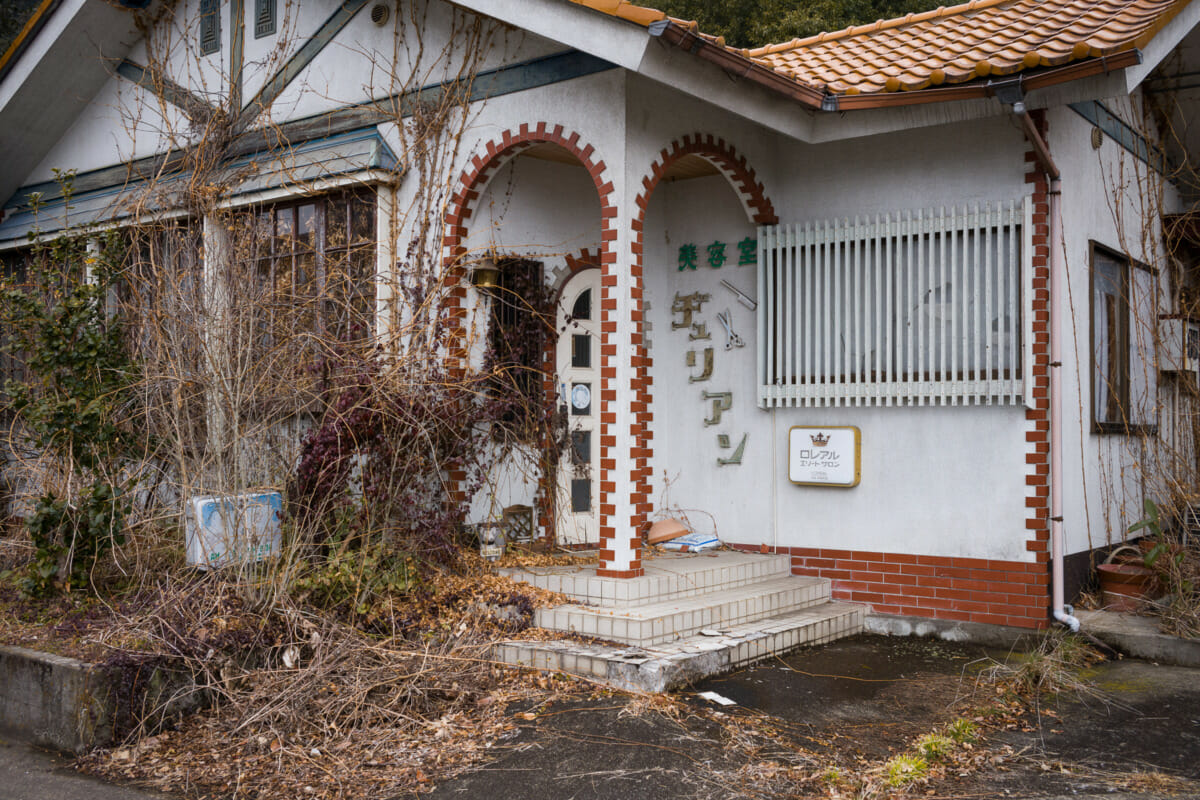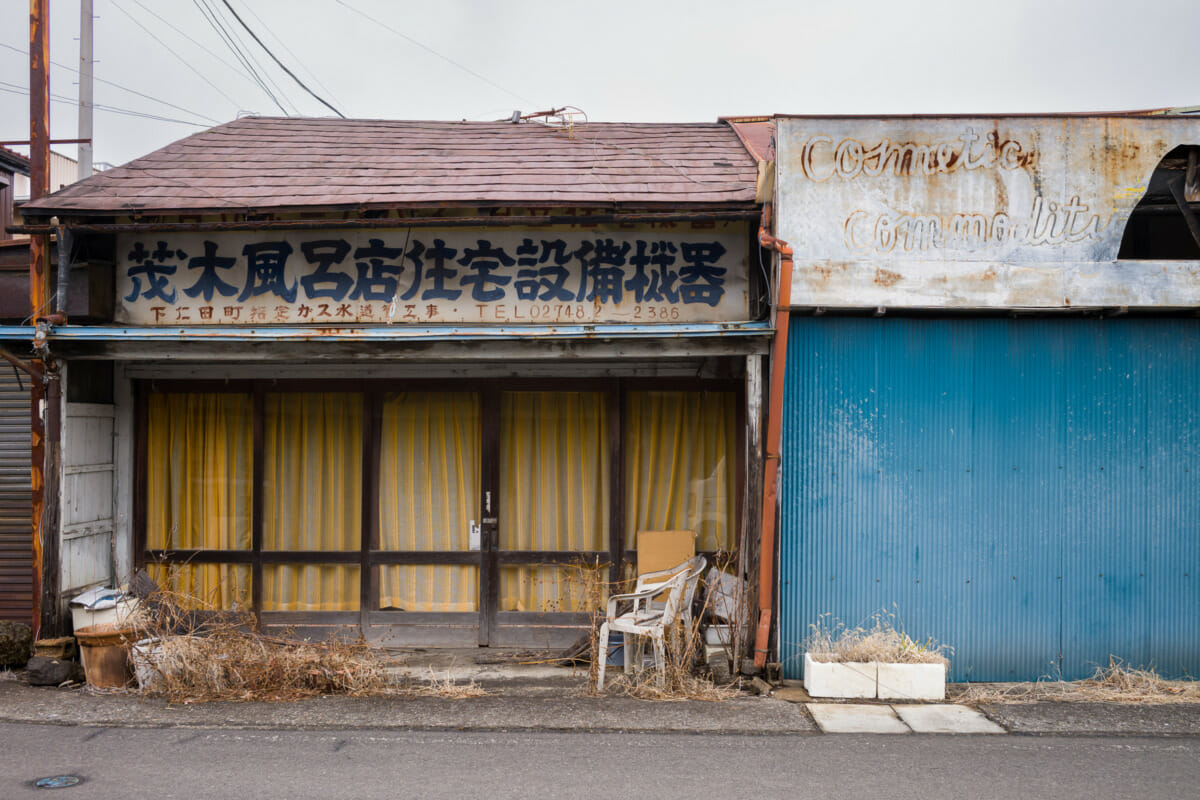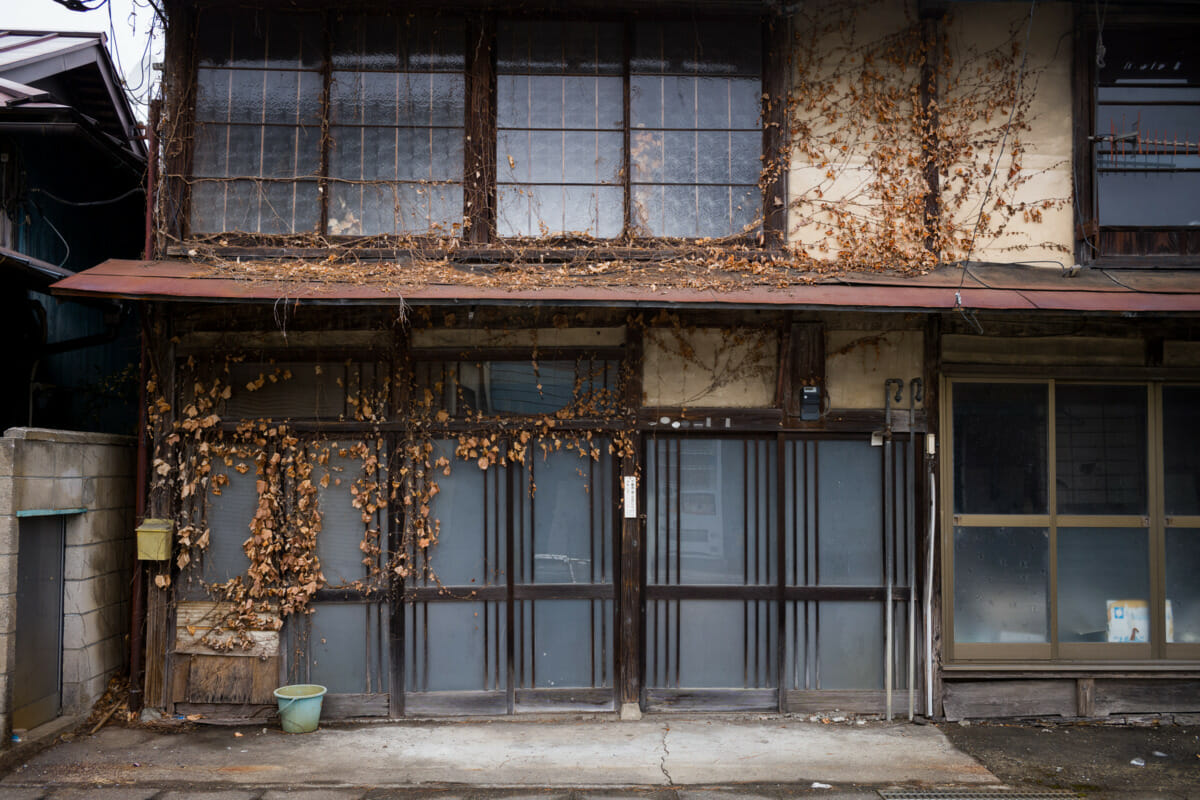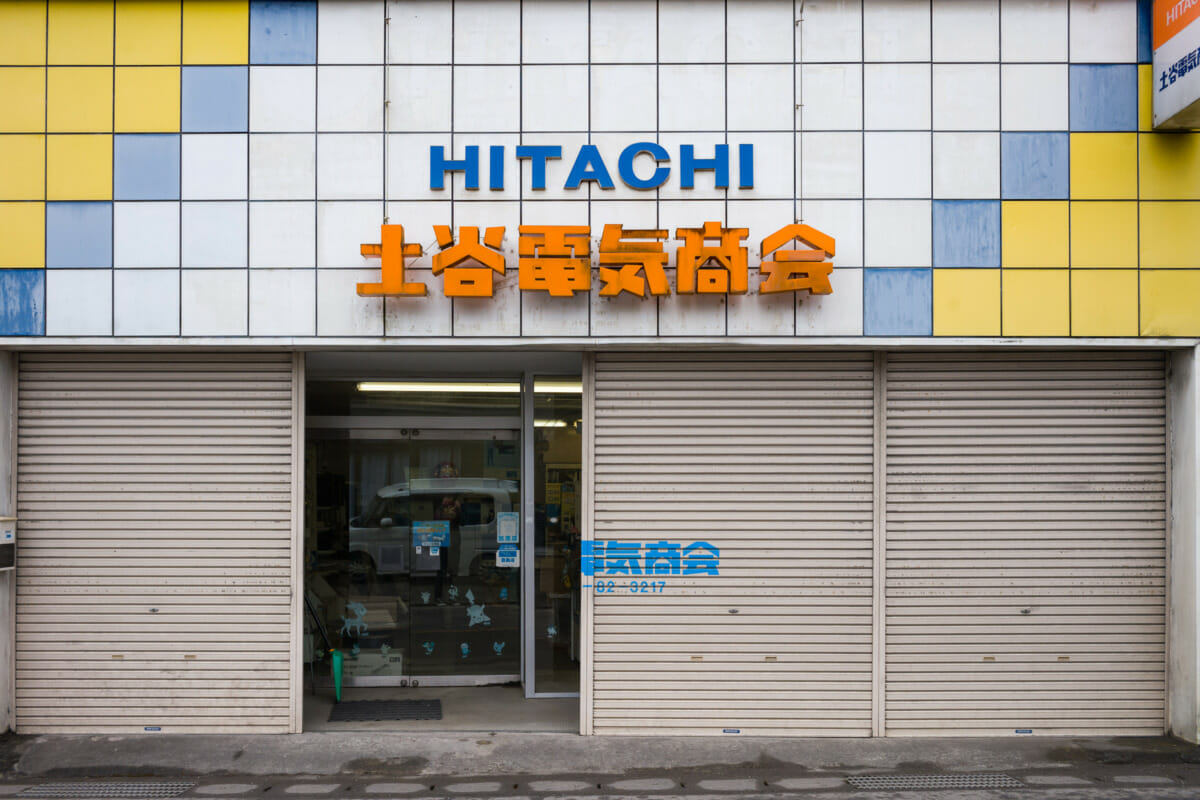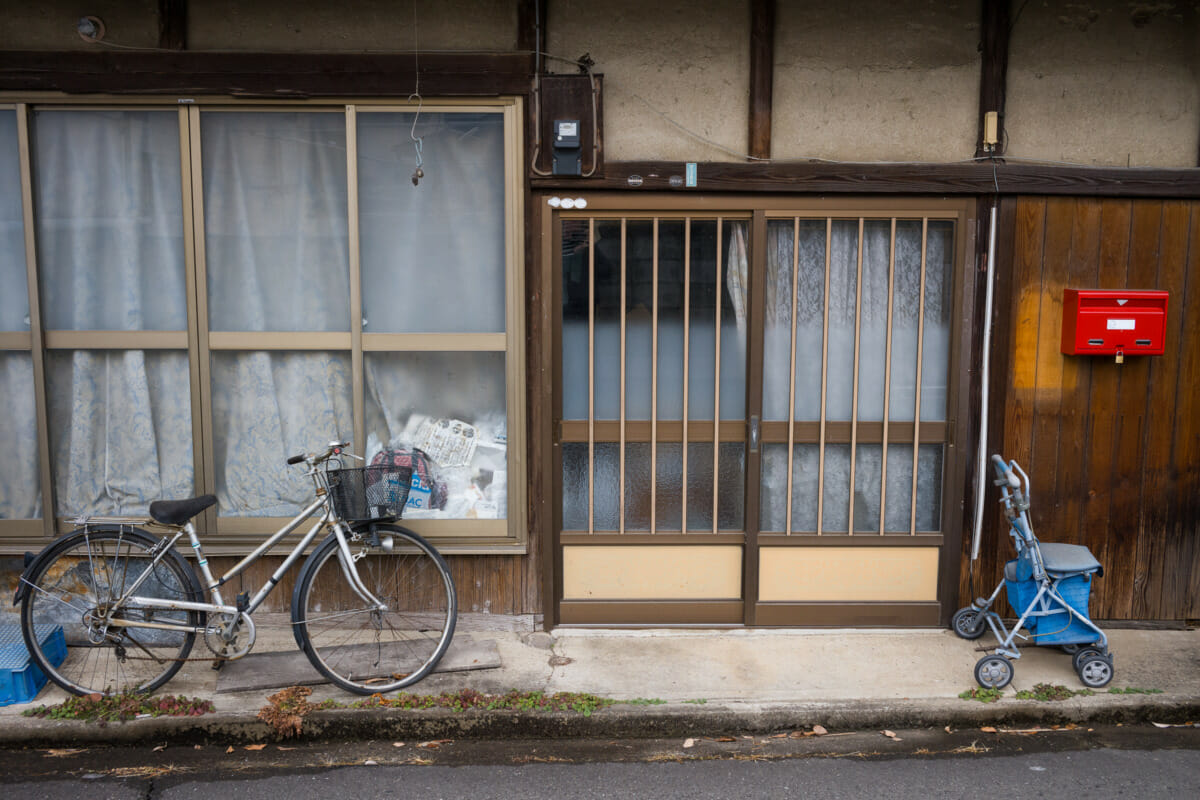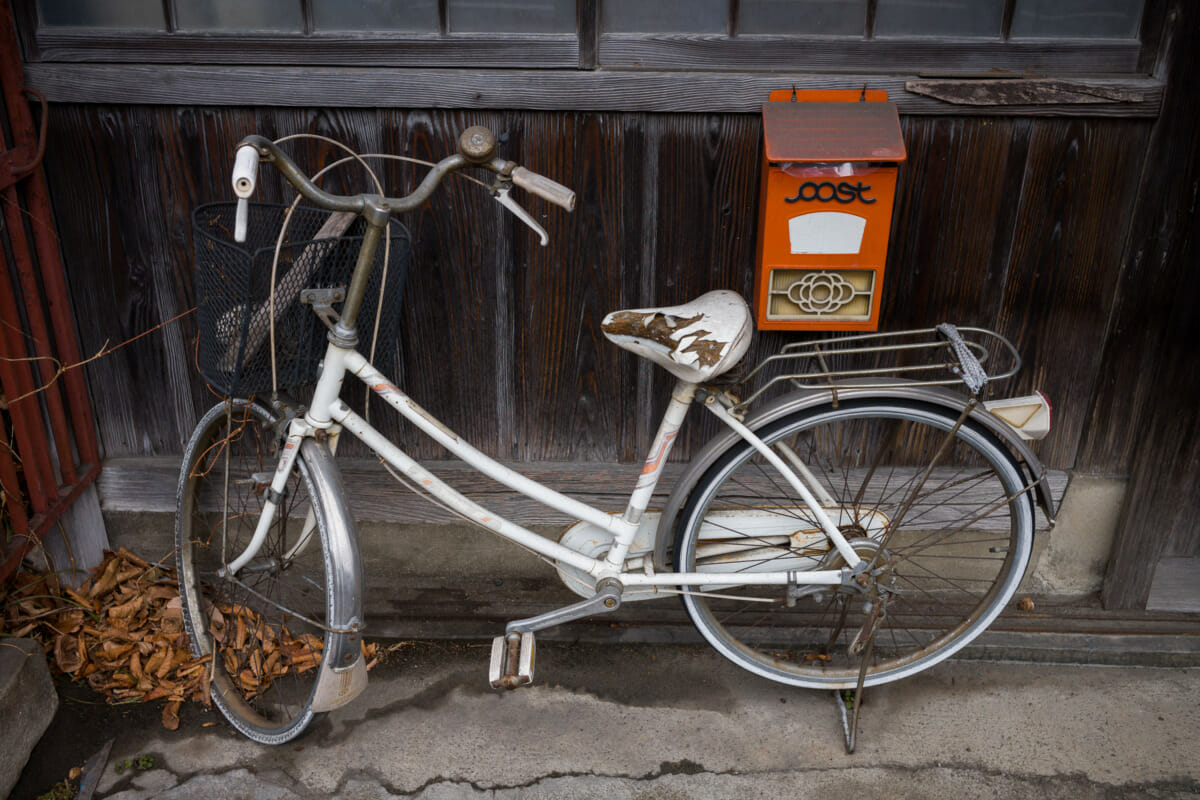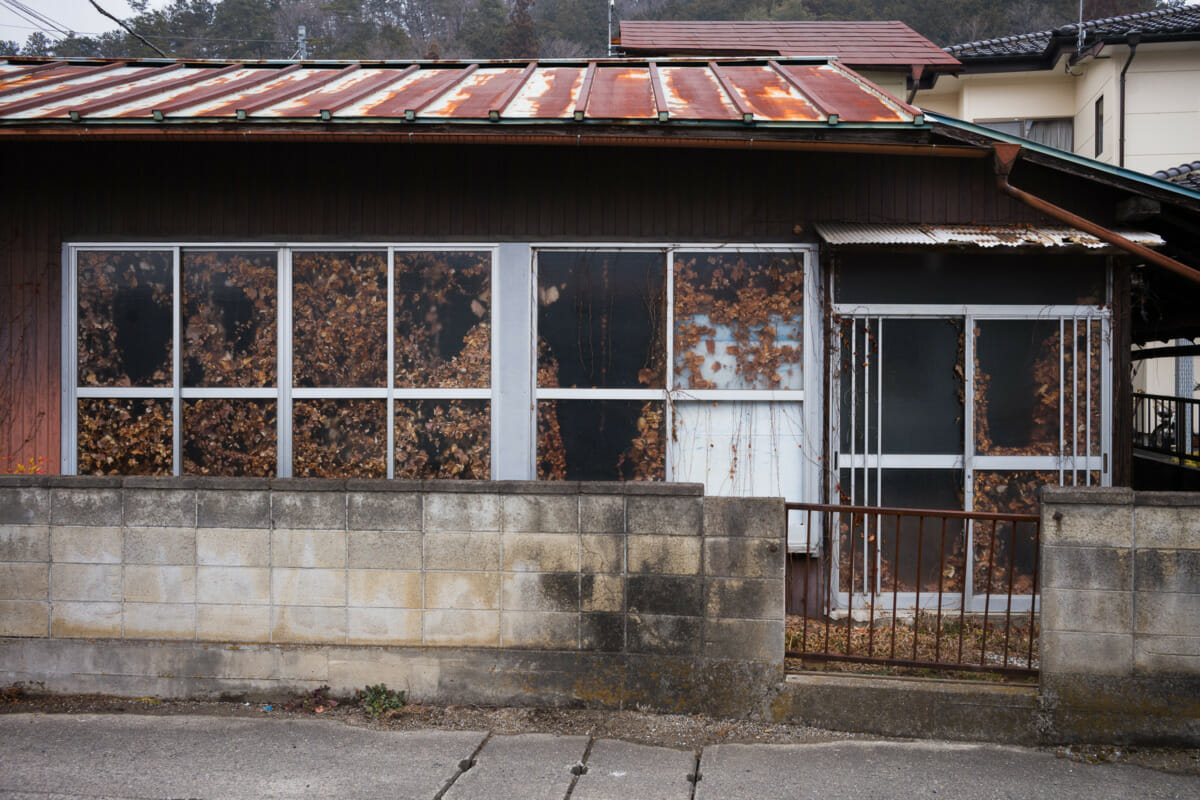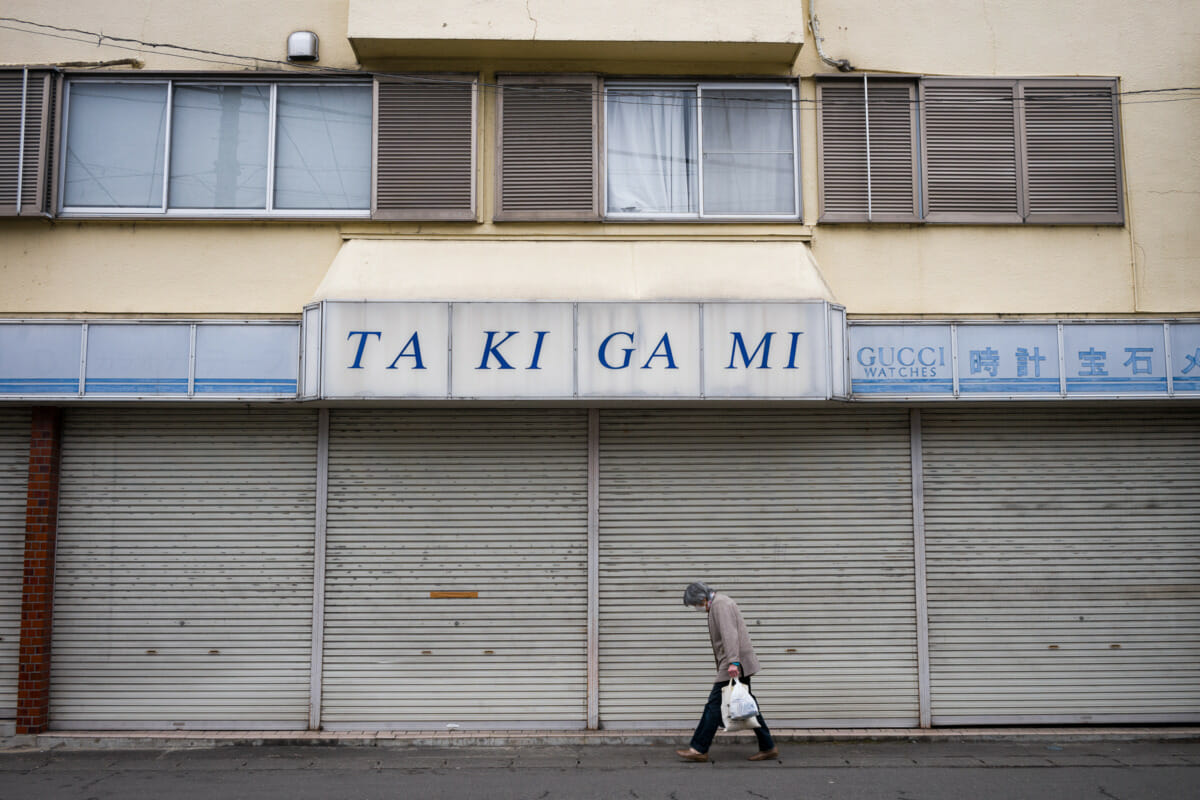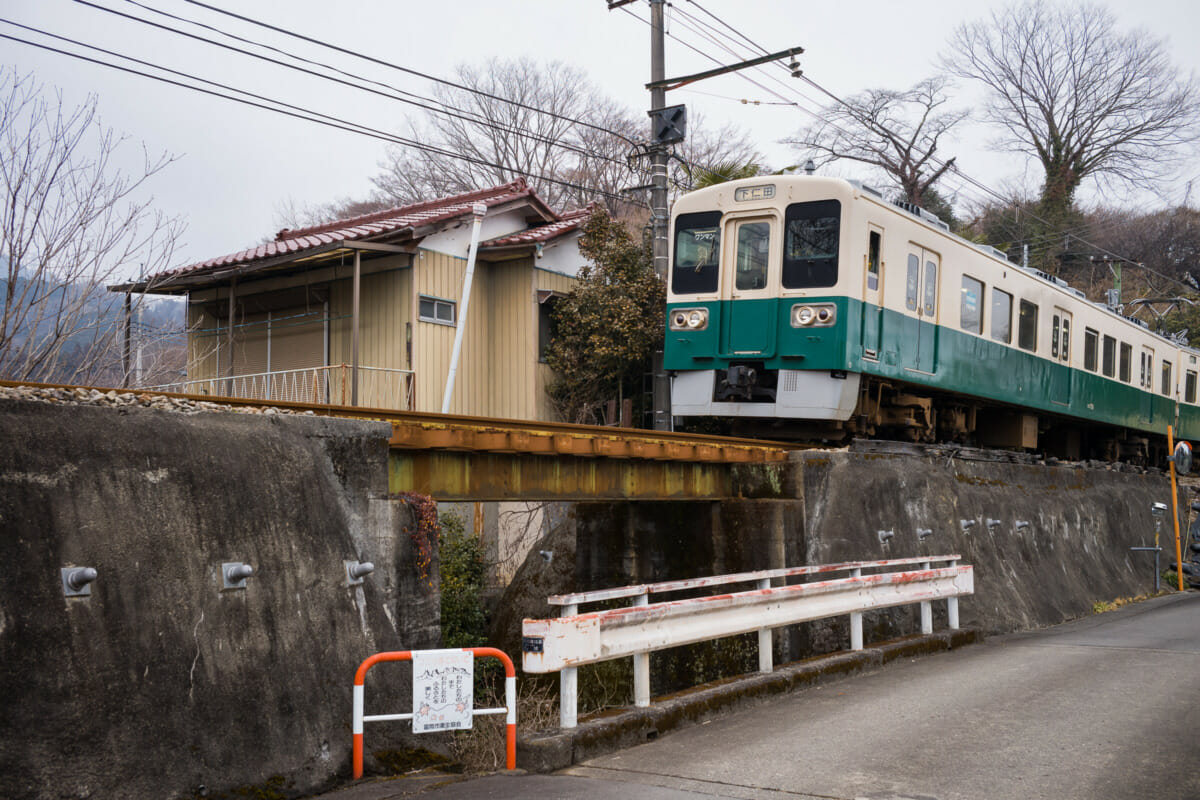There’s no shortage of record shops in Tokyo, but few are as fantastic looking as this little place.
Faces of Ueno from the past
When the sun was out and the sky clear, Ueno, and even more so its Ameyoko market street, were once almost embarrassingly regular destinations for me and my camera. “Where did you go today?” my wife would ask, but before I could even answer, my decidedly sheepish look would have already given the game away, and with mock, wide-eyed surprise, she’d exclaim, “Ueno, again!”
Despite managing to trick her into guessing wrong every now and then, it invariably was Ueno, again, but with its gifts of lovely light and fascinating people, how could I not give in when the conditions were ideal?
I thought about this the other day when I went back after a fairly long break. It had been a similarly long while before that as well. The sky was blue, and timing wise the light was just right, but with Tokyo still in a quasi-state of emergency, and masks very much the norm, it was a stark reminder of why I’ve become something of a stranger. It’s just not the same. Eyes are the window to the soul and all that, but uncovered faces are infinitely more interesting. Sights that will hopefully return in the not too distant future, but until then, here are some people from Ueno of the past.
Omotesando public housing of the past
About a month ago I posted photos of a huge and truly distinctive Japanese public housing complex. Known as danchi, these once modern concrete structures are now slowly disappearing as age catches up with them and far more desirable buildings take their place.
It’s a shift that isn’t the least bit surprising, as unlike that aforementioned behemoth, the vast majority of 1960s and 70s danchi are fairly modest in size. Invariably they are also incredibly utilitarian in design, just like the very dated apartment blocks below. The key difference with these, however, is that they are just a few minutes walk from Omotesando — one of the fanciest and most expensive areas in the capital.
With that in mind, it’s undoubtedly the last kind of accommodation you’d expect to see in such a neighbourhood, but with half of them gone already, and the rest being prepared for demolition, it’s presumably the last time it will be seen as well.
Tokyo colour coordination
Last year I posted a series of photos that featured some Tokyo citizens nicely in synch with their surroundings. Since then I’ve managed to take a few more, so here’s another instalment of colour coordination that includes bleak concrete, and much more unexpectedly, a big cat.
A patched up and partially covered Tokyo pedestrian
Photographs of partially covered and patched up buildings aren’t uncommon on these pages, so for a bit of a change, here’s a partially covered and patched up Tokyo pedestrian instead.
Faded scenes from a slowly disappearing Japanese town
It’s something I’ve mentioned many times on these pages, but away from the big cities and popular tourist spots, the rest of Japan really is another world altogether. Of course the overwhelmingly rural landscape plays its part, but invariably it’s the very obvious decline brought about by the country’s ageing population that provides the starkest visuals of just how different things really are.
Only a few hours north of Tokyo, and located rather appropriately at the end of a local train line, Shimonita is primarily an agricultural settlement, which in itself isn’t exactly an industry that attracts or retains younger residents. A factor that was immediately evident when walking around, as the few people we did see were almost all elderly. Something the population stats also confirm, as after peaking at 22,450 residents in 1950, that number was down to just over 7,000 in 2020, and as the biggest drops have all happened since the turn of the century, it’s a trend that’s only going to continue.
With all that in mind, the future looks bleak for not only Shimonita, but all the other places just like it, and yet for me at least, it’s this very aspect that makes them so fascinating. Wandering the quiet streets leaves so much to the imagination, with hints about the lives that have been lived there on almost every corner, and in each abandoned building or shuttered up shop front. Stories that in their own way still survive, at least as long as the buildings do anyway, but when they eventually disappear, there really won’t be much left to remember at all.

